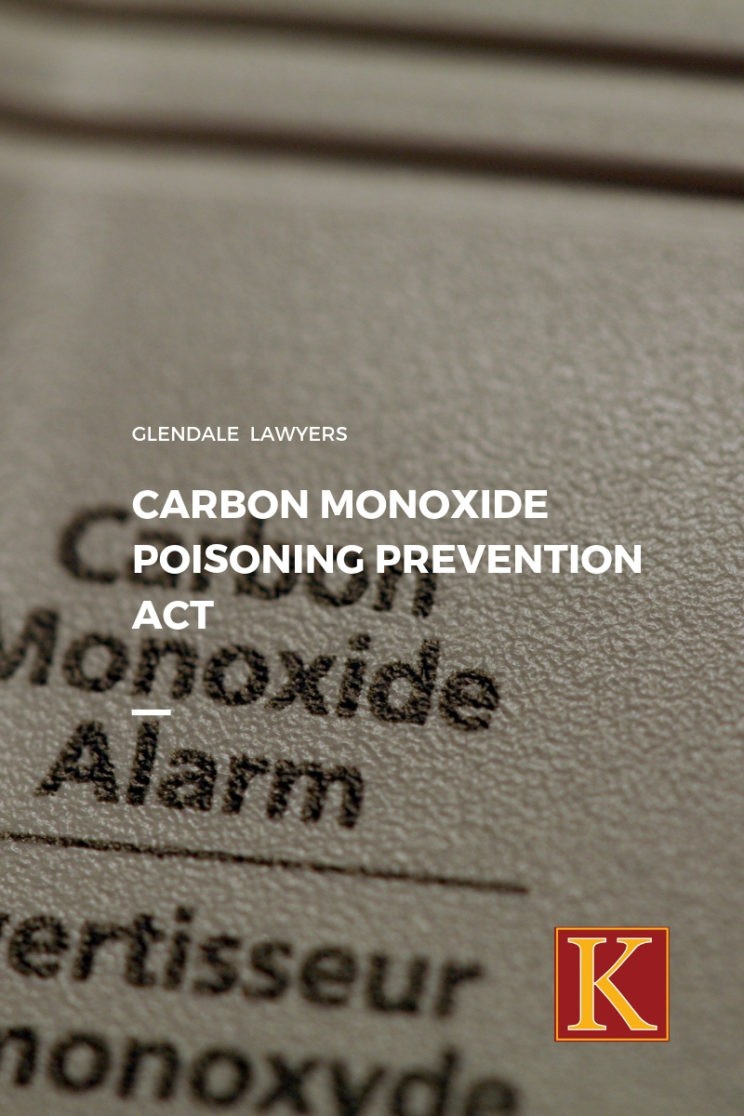Carbon Monoxide, also known by its chemical abbreviation (CO), is a gas comprised of one part carbon and another part oxide. Carbon monoxide is a colorless and odorless gas which exposure can lead to serious illness or death. The most common causes of the wrongful death from Carbon Monoxide poisoning are improperly ventilated generators, stoves, fireplaces and water heaters. According to the California Air Resources Board carbon monoxide poisoning causes death from thirty to forty people each year
California Carbon Monoxide Poisoning Prevention Act
The primary law in California which protects victims from Carbon Monoxide Poisoning is California’s Carbon Monoxide Poisoning Prevention Act of 2010, which requires carbon monoxide detectors to be installed in every dwelling unit intended for human occupancy. According to the Act all residential property that have a non-electric heater, non-electric appliance or have a fireplace, are required to install carbon monoxide detectors.
The California Carbon Monoxide Poisoning Prevention Law Provides That
- All single-family homes, including individually-owned condominiums, (owner or tenant occupied) must be equipped with a detector on or before July 1, 2011.
- All other residential units must be equipped with a detector on or before January 1, 2013
Carbon Monoxide Detector
CO device is designed to detect carbon monoxide and produce a distinct audible alarm. Carbon monoxide device provides a vital, low-cost and highly effective protection against carbon monoxide poisoning. It can be battery powered or plug-in devices with battery backup. The detector must be certified pursuant to the requirements of Underwriters Laboratories Inc. (UL) and the American National standards Institute (ANSI).
California’s Building Code: Carbon Monoxide Should Be Installed
According to California’s Building Code Carbon Monoxide devices are required be installed outside of each separate sleeping area, however for maximum security the State Fire Marshal’s Office recommends to have a CO detector in each sleeping room. CO devices are also required to be installed in garages, basements and on each level of a multi-level home. In hotels, motels, and boarding houses the device must be placed in a sleeping unit that has a fuel-burning appliance. Because Carbon Monoxide is lighter than air and can be found with warm, rising air, detectors must be placed on a wall about five feet above the floor. The detectors can be placed on the ceiling far from a fireplace or flame-producing appliance.
Health and Safety Code Section 17926.1 CO Detectors
Health and Safety Code Section 17926.1 particularly applies the requirements of the Act to landlords who rent dwelling units to tenants. According to the Act, CO devices shall be operable when the tenant takes possession of the unit. Landlords can enter units for purposes of maintaining or installing CO detectors with notice pursuant to California Civil Code Section 1954. Tenants are required to inform the landlords if the CO device is deactivate or is not operating properly. In case CO device or its batteries were unplugged or removed and the owner was not informed, the owner is not in violation of the law.
Violations of Carbon Monoxide Poisoning Prevention Act can lead to a maximum fine of $200. However property owners will be given a thirty-day notice to correct as a chance to avoid the fine.

